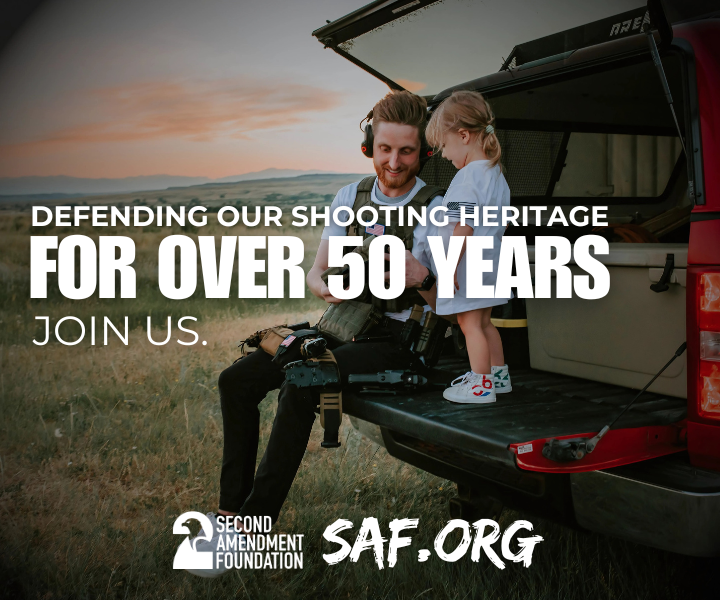
By Mike Nesbitt | Contributing Editor
Revolver shooting certainly takes practice! This has been said over and over, and I’m saying it again right now.
If you don’t think that is correct, just try some shooting without practice. It usually takes only one lesson to re-align your thoughts about how much practice is needed to accurately shoot a revolver, and I mean any revolver, black powder or otherwise.
And when we talk about shooting practice, we’re actually talking about practice in two different areas. Of course, we need practice to be what we might consider “good” at shooting a revolver. But then it does not end because we need more practice to stay good with that revolver. If you become good with a six-gun but then don’t keep in practice, you find, usually with your next series of shots, that you’ve lost all or almost all that you had gained.

Let me admit that I speak from experience with that last statement. Also, my specific comments will be directed to shooting with black powder revolvers but the statements being made about practice and keeping in practice are made in general, to be extended to all shooting with pistols or revolvers. When talking about practice, the only thing that will be excluded is the shooter who doesn’t practice.
For the last several months, a couple of years in fact, the revolver I’ve used the most and relied upon for my shooting in the black powder after-matches as well as in the Black Powder Revolver Match at Buffalo Camp has been my Uberti copy of the Smith & Wesson New Model #3 Frontier, chambering for the .44 Special cartridge. (It is truly a shame that this fine revolver is no longer available but, once again, this story is in the general sense and the choice of the pistol which you use is up to you.) With that .44 caliber revolver, I most often use .44 Russian cases loaded with 18 ½ grains of Olde Eynsford 2F powder under 250-grain bullets, cast from Lyman’s #429184 mold, which was a copy of the original bullet for the .44 Russian. The original loadings used 23 grains of black powder and the load I use is almost equal to the old load because the modern cases are not balloon-head, and the solid head cases of today, by Starline, have slightly less capacity.
But loads or ballistics isn’t the point for this story, I just wanted to establish a base line. Basically, to let you know what I was practicing with and that same gun and load is what I’m featuring in this tale.

That Smith & Wesson copy is probably just as good as the real thing. I can say that with some experience because previously I did have a couple of the old S&W New Model #3 revolvers, also in .44 Russian caliber. Yes, I wish I still had them but that was in another era. However, those old originals did teach me many things which became the foundation of why I had to have one of the new copies, by Uberti, of those old top-break Smiths. To go on just a bit about those replicas of the top-break S&W guns, the new versions of the #3 Russian are still available as well as the #3 Schofield revolvers, and, more recently, the #3 Americans. Those are all good copies of the older Smith & Wesson’s but, in my opinion, the best of the bunch, the replica of the New Model #3, is no longer made.
With my .44 Russian, as I like to refer to it, I made it a habit, a couple of years ago, to practice with it often, shooting at least ten shots per week at a paper target so the results could be seen. A couple of the boys in the club joined me with their revolvers. That continuous practice paid off, even though it was only ten shots per week. We would do this practice after trying or testing our rifle loads, either with the black powder cartridge rifles or muzzleloaders, and shooting the revolvers was just a way to finish the day as far as shooting went. But that practice paid off and all of us who shot those ten shots per week could see the advantages of such shooting.

It was that practice that allowed me to use my New Model #3 Frontier in .44 Russian with black powder loads on the trail-walk at Buffalo Camp to “ace” the trail by hitting every target, winning the revolver match a couple of years ago. I’ve mentioned doing that before and so far, I’m the only one who has hit all of those targets in competition. Hitting those same targets in practice just doesn’t count although the shooting is the same. And now, with Buffalo Camp coming up again, I’ll be trying to hit as many of those targets as I can once more, trying for the top score.
The only thing getting in my way, or keeping from doing that, is me.
But I’ve had some good help, that is “help” which gets in my way. The most of this good “help” came from the short barreled Uberti copy of the Colt 1851 Navy, which I’ve mentioned more than once lately. In case you haven’t read about my .36 Navy already, it is an older replica which I’ve been doing a lot of shooting with lately. The brass bead front sight was not distinct enough for me, which made sight alignment rather difficult, so a new short blade was dovetailed into the barrel just behind the gun’s muzzle. In addition to that, the used revolver was given some tuning which gave it a crisp and light trigger pull. Those modifications made the gun very shootable, with sights that could clearly be seen and a trigger pull which certainly aided in accurate shooting.
That .36 Navy, with the 5-inch barrel, became my shooting partner for a few months and I left my S&W copy in .44 caliber behind. While shooting the .36, I was able to win a number of “after-matches” at our local shoots. Those “after-matches” are simply what they are called, an extra match after the main match of the day. The way we “manage” those is to simply have each shooter who enters the after-match put a dollar in the pot. Then we hold the brief match, and with revolvers that usually amounts to firing ten shots at a bullseye target. After the shooting is done, the targets are quicky scored and the winner takes the pot. No second or third places involved. And with that .36, shooting a .375” round ball over 22 grains of Olde Eynsford 2F powder, I was making money. Honesty, I might have made enough to cover what I had lost in previous after-matches.

The little .36 Navy is certainly a pleasure to shoot. Its light recoil, shooting an 80-grain round ball, makes it very comfortable. For shooting at close range targets, such as our usual after-match target which is often only at 30 to 36 feet, that percussion revolver is simply superb. That made it much harder to leave behind even though I found it was not that good of a hitter for targets at somewhat longer ranges. Those longer ranges are found on our black powder trail-walk where the Navy was tried but not with the best results.
As the time for our annual Buffalo Camp is approaching, I went back to the .44 Russian which I expect to use in the Black Powder Revolver Match which is part of Buffalo Camp. But first came another after-match. That was the first time I had used the .44 Russian since my attentions had wandered to the .36 Navy but, even so, I entered the after-match with confidence.
Just having confidence wasn’t enough. My shots went all over the paper, above and below the black, and the target held a score that was actually embarrassing.
Next, on one of our Open Trail days, where we shoot the trail-walk for practice, I used the .44 again. The first pistol target on that trail is a fairly large steel gong, cylindrical in shape, hanging maybe 15 yards away. To me that always seemed to be an easy target and I don’t recall ever missing it, until now. My shot with the .44 Russian certainly went somewhere else. That was the start of a poor score for me. After shooting at the ten targets which we use for the revolver match; I had missed more than I had hit. Some serious practice was certainly needed.
My confidence in that Uberti top-break .44 revolver was still very high. This means all of my problems in getting good hits was on my shoulders and I started to break things down a bit to be able to make corrections. First, my misses both high and low spoke loudly of not holding the gun tightly enough. The .44 has far more recoil, although not uncomfortable, than the little .36, so not holding the gun tight enough allowed it to “roll” in my hand during recoil. That will certainly change the attitude (angle and elevation) of the barrel before the bullet can leave the muzzle. Using the .36 had let me get too relaxed while shooting.

Next, the trigger-pull on the .44 was not as light as on the .36 and I had gotten used to shooting the .36 so much that when I applied the same trigger squeeze while shooting the .44, it wouldn’t go off. Then I’d try to hurry which caused me to jerk the shot. Anytime we shoot while anticipating the shot, we won’t do really well. In this case, my anticipations caused shots to go very wide, scattering those shots on the paper targets and completely missing shots on the trail.
In order to re-train myself with the .44 Russian, I went back to my schedule of shooting at least one target per week with that revolver while paying close attention to keeping a firm grip on the gun and maintaining a consistent and careful trigger squeeze. That practice paid off. After a couple of weeks of this practice, I entered another after-match with the gun and was able to win the pot with a score of 97-3X.
Of course, concentration played a big part too. While aiming at the target and slowly squeezing the trigger, sight picture was concentrated on as well as the hold or grip on the gun. All of these things need to be coordinated and practiced.
And that practice seems to be paying off. Just yesterday, as this is being written, I shot another practice target with ten shots at 10 yards, offhand but with a two-hand hold, that scored 100-8X. A photo of the revolver and that target is included here and you can see that I still have some work to do. Those 8 X’s are all good but not the best because the center of the X ring, including the X, is still intact. I want to shoot that X right out, and I’ll continue practicing until I can do it! Then I’ll do my best to stay in practice…


